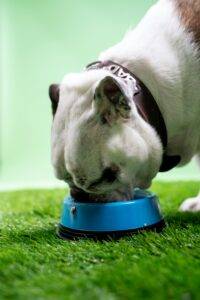
Choosing the right food for your furry friend is an important decision that can significantly impact their health and well-being. With so many options available, navigating the world of pet food can feel overwhelming. Three main categories dominate the market: dry food, wet food, and raw food. Let’s explore the advantages and disadvantages of each to help you make an informed choice for your pet.
Dry Food: The Crunchy Classic
- Convenience: Dry food is the most convenient option. It’s easy to store, portion control, and travel with.
- Cost-Effective: Dry food is generally the most affordable type of pet food.
- Dental Benefits: Crunching on kibble can help clean teeth and remove plaque buildup in some pets.
- Nutrient Balance: High-quality dry food is formulated to provide a complete and balanced diet with all the essential nutrients your pet needs.
Drawbacks of Dry Food:
- Lower Moisture Content: Dry food contains less moisture (around 10%) compared to wet or raw food. Ensure your pet has access to plenty of fresh water to compensate.
- Carbohydrate Content: Some dry food options contain high levels of carbohydrates like grains, which may not be ideal for all pets.
Wet Food: The Delectable Delight
- High Moisture Content: Wet food boasts a moisture content of around 70-80%, promoting hydration, especially for pets who don’t drink much water.
- Palatability: Many pets find the taste and texture of wet food more appealing than dry food.
- Variety of Options: Wet food comes in various flavors and textures, catering to picky eaters or pets with specific dietary needs.
Downsides of Wet Food:
- Storage and Spoilage: Wet food needs to be refrigerated after opening and has a shorter shelf life compared to dry food.
- Cost: Wet food is generally more expensive than dry food on a per-ounce basis.
- Dental Health: Wet food doesn’t offer the same dental benefits as kibble.
Raw Food: Nature’s Bounty
- Species-Appropriate Diet: Raw food mimics a pet’s natural diet, consisting of raw meat, bones, organs, and vegetables.
- Nutritional Benefits: Raw food is rich in nutrients, enzymes, and moisture, potentially contributing to a healthier coat, better digestion, and increased energy levels.
Challenges of Raw Food:
- Preparation and Storage: Raw food requires more preparation and careful storage to prevent bacterial contamination.
- Nutritional Balancing: Creating a balanced raw food diet at home can be challenging. Consult a veterinarian or a qualified pet nutritionist for guidance.
- Cost: Raw food is generally the most expensive feeding option.
- Safety Concerns: There is a risk of bacterial contamination for both you and your pet when handling raw meat.
The Bottom Line
There’s no single “best” food option for all pets. The ideal choice depends on your pet’s age, breed, health condition, activity level, and preferences. Consider consulting your veterinarian to determine the best dietary approach for your furry companion.
